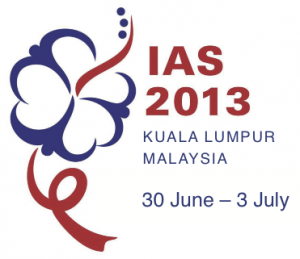Pipeline oral HCV drugs and generic global access to DAAs: the need to mirror ARV programmes
25 July 2013. Related: Conference reports, Treatment access, Hepatitis coinfection, IAS 7th Kuala Lumpur 2013.
 Simon Collins, HIV i-Base
Simon Collins, HIV i-Base
As the exciting hepatitis C pipeline of direct acting antivirals (DAAs) promises higher cure rates with more tolerable, interferon-free, oral combinations, the issue of access to these medicines will become increasingly important.
Even in Western countries, for whose markets these new drugs were primarily developed, access is expected to be limited by cost to national health services (and healthcare insurance in the US). In resource-limited countries where HCV coinfection is prevalent among HIV positive people, HIV/HCV coinfection reflects a major unmet need in HIV positive patients globally, and it is clear that a similar response to that achieved for antiretrovirals will be needed,
Andrew Hill from Liverpool University and colleagues presented the first analysis of predicted generic costs for ribavirin and four DAAs that are currently in late phase development – daclatasvir, sofosbuvir, faldaprevir and simeprevir – based on compound properties including chemical structure, complexity of synthesis, daily dose etc, and then adapted manufacturing costs achieved by ARV access programmes from the Clinton Foundation and MSF.
For HIV drugs, the minimum manufacturing costs (per gram) by drug class ranged from $0.2 for NNRTIs, $0.2-1.0 for nucleoside analogues and $0.5 for nucleotide analogues to $1.0-$2.1 for protease inhibitors,
This resulted in predicted cost for 12-week treatment of $20-63 for ribavirin, $10-30 for daclatasvir, $68-136 for sofosbuvir, $100-210 for faldaprevir and $130-270 for simeprevir, see Table 1. There has already been encouraging study results using declatasvir plus sofosbuvir and sofosbuvir is also being studied with simeprevir.
The poster concluded that large scale production of a combination of ribavirin plus two DAAs might be achievable at $100-200 per person within 15 years – given patent expiry dates for the new drugs are from 2026-2029.
From a global health perspective, the urgency for establishing initiatives such as the patent pool for hepatitis C drugs and political pressure for much earlier access should make such a deferred timeline unacceptable.
| HCV DAA | Patent expiry | Class/daily dose | Total dose (12 wk) | Predicted cost (US $) |
|---|---|---|---|---|
| ribavirin | generic | NRTI/1200 mg | 84g | $20-63 |
| daclatasvir | 2027 | NS5a/60 mg | 5g | $10-30 |
| sofosbuvir | 2029 | NtRTI/400 mg | 34g | $68-136 |
| faldaprevir | 2029 | PI/120 mg | 10g | $100-210 |
| simeprevir | 2026 | PI/150 mg | 13g | $130-270 |
Reference:
Hill A et al. What is the minimum cost per person to cure HCV? 7th IAS Conference on HIV Pathogenesis, Treatment and Prevention, 30 June – 3 July 2013, Kuala Lumpur. Late breaker poster TULBPE16.
http://pag.ias2013.org/abstracts.aspx?aid=3142
http://pag.ias2013.org/EPosterHandler.axd?aid=3142 (Poster PDF)

